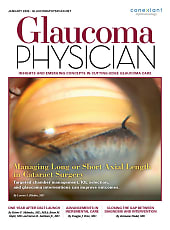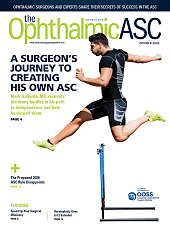In his presentation titled “AI Scribing and Telephone Management” at the ASCRS 2025 annual meeting on April 26, Robert T. Chang, MD, started by telling attendees that “AI gives you superpowers!”
Last year, after a successful test run, Dr. Chang and his colleagues throughout Stanford Health Care began using an AI copilot—a digital assistant that provides real-time suggestions to the user. Yet, he told the ASCRS audience, “AI agents are the next evolution of large language models (LLMs).”
In contrast to an AI copilot, an AI agent is a system or program that can autonomously perform tasks on behalf of a user by employing available tools and making decisions based on its environment. These agents can learn and adapt over time, allowing them to handle complex tasks and improve their performance.
Dr. Chang went on to discuss how virtual scribes and call management systems are AI agents designed specifically for medical practices. Following are some key takeaways from his presentation.
Ambient Listening & Note-Taking
Via ambient, or environmental, listening to the doctor-patient conversation, AI scribes can take a patient’s history of present illness, including medications, surgeries, and family history; create a summary note, including an assessment and follow-up plan; suggest ICD-10 and CPT codes based on the visit; pre-chart test orders and prescription refills; and even pre-write answers to patient messages.
Dr. Chang said that he has installed the program on his cell phone and simply leaves it open on his desk during the conversation, letting patients know that the virtual scribe is taking notes for him.
Charting Data
Going beyond simple note-taking, an AI scribe can also insert key points from the patient visit into a custom MD template, Dr. Chang said. He shared an example, showing the usual data fields (visual acuity, intraocular pressure, slit lamp findings, etc), along with commands to list findings. If there was “nothing mentioned” for a particular field, the AI agent is instructed to add a specific phrase, such as “No neovascularization or nodules OU,” or to simply delete that line.
Call Management
As a segue to discussing AI phone management, Dr. Chang referenced a March 31 report by Cameron R. Jones and Benjamin K. Bergen titled, “Large Language Models Pass the Turing Test.” This study evaluated AI systems in two randomized, controlled, and preregistered Turing tests on independent populations. During the blind study, participants had brief, simultaneous conversations with another person and an AI system, then were asked which conversational partner they thought was human. The AI bot GPT-4.5 was judged to be the human 73% of the time, demonstrating that such systems are capable of effective verbal communication.
Dr. Chang then spoke about using an AI-powered voice platform called Phonely to manage calls for a practice. The manufacturers claim that the system is able to hold “natural” conversations with callers, deftly handling interruptions and scheduling appointments with human-like ability.
Phonely also captures and analyzes call data, allowing administrators to review audio recordings, transcripts, and metadata “to extract key insights from customer interactions.”
Dr. Chang ended his presentation with a question: “Now that you have a feel for what AI is capable of, do you feel more excitement or fear?” The audience was left to ponder their own answers.








